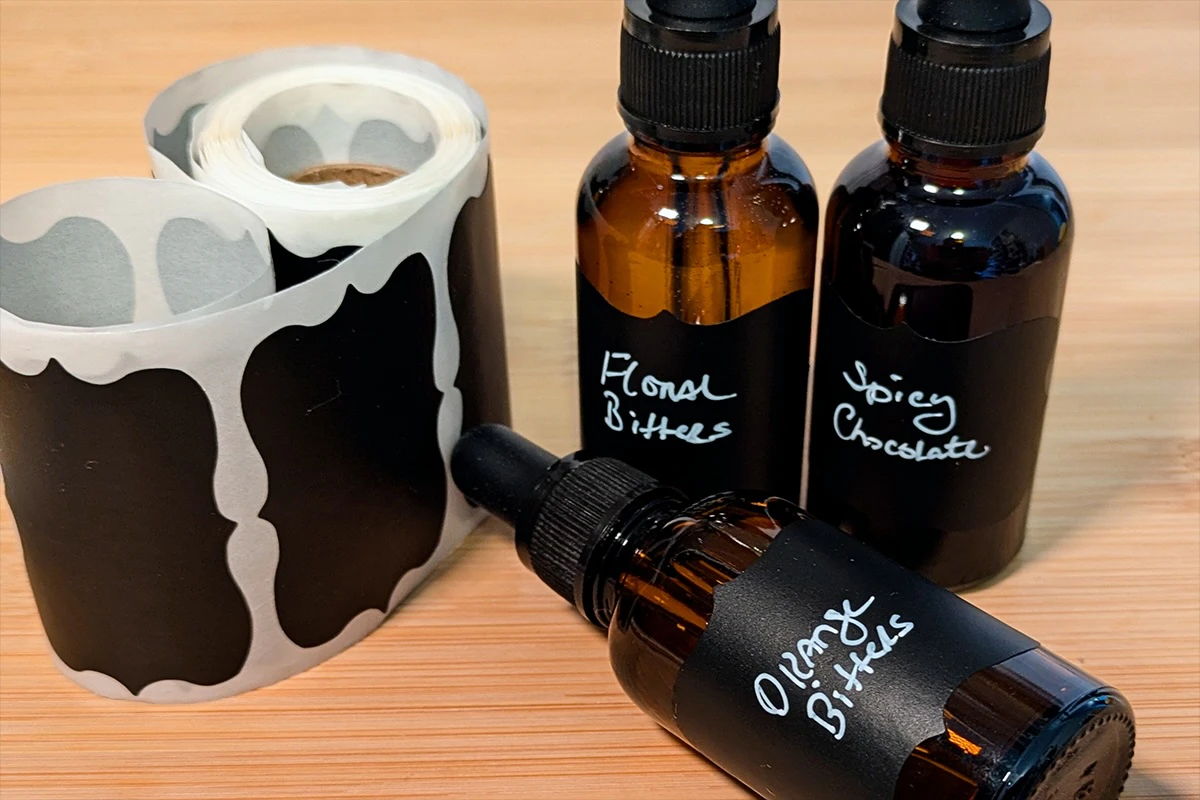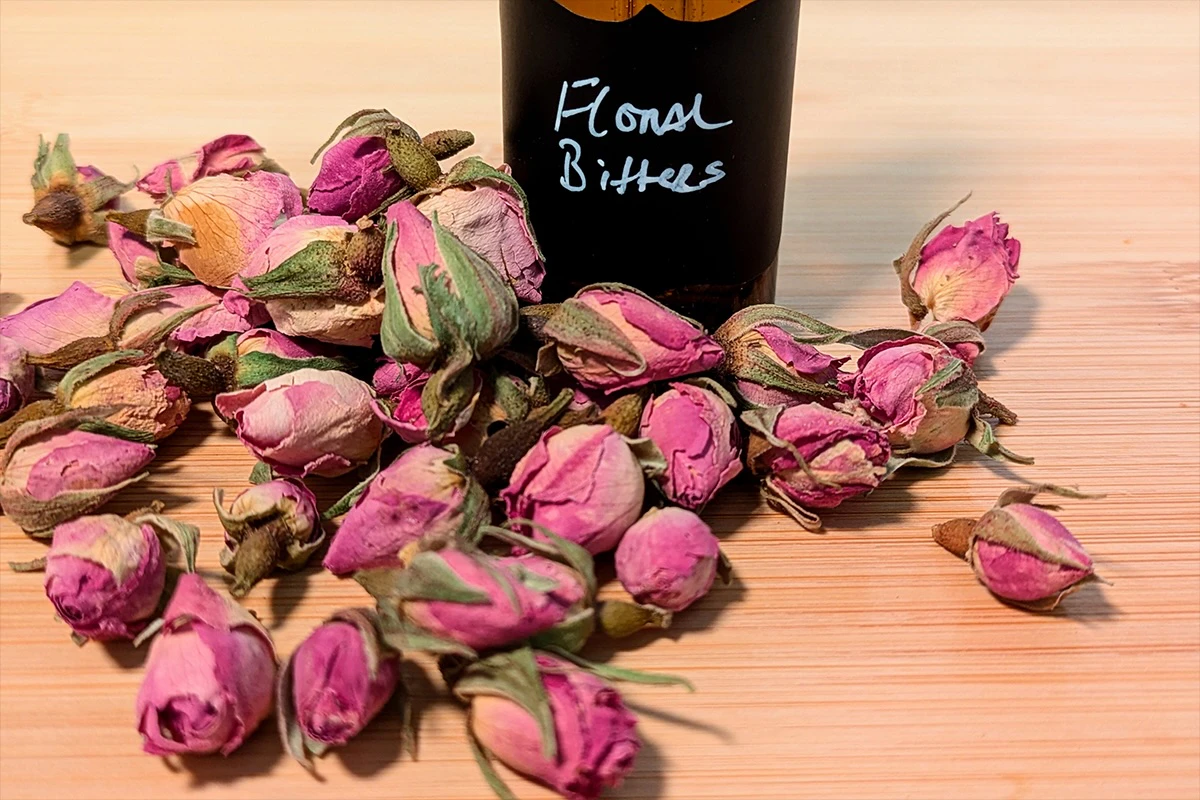To most mixologists, bitters are a critical cocktail component—and they long have been.
In an 1806 newspaper article, responding to a reader who asks what the word “cocktail” refers to, the editor replies that it’s basically liquor, sugar, water, and bitters. That implies an inseparability between bitters and cocktails.
A Dash of History
Bitters themselves are much older than that, though. The use of bitters-like substances dates to ancient times, when Egyptians infused herbs and roots in wine for medicinal purposes. Later, with advancements in distilling, people infused these botanicals into distilled spirits. In the 1700s, physicians prescribed bitters to treat various ailments—just add a few drops of a bitter tincture to a beverage of choice or drink a formulated tonic created by the pharmacist.
The famous Angostura bitters date to 1824, according to the House of Angostura. That’s when the company’s founder, Johann Siegert, perfected and produced a tonic called Amargo Aromatico—literally, aromatic bitters—to treat stomach ailments in Angostura, Venezuela, now known as Ciudad Bolívar. Siegert had moved to Venezuela from Germany to serve as a surgeon general.
By 1850, he was exporting his bitters to England, the Caribbean, and the United States. Later, in the 1870s, the family moved to Port of Spain, Trinidad. One of Siegert’s sons, Don Carlos Siegert, launched the Angostura brand and managed its growth. Going into the golden age of cocktails, bitters increasingly became a staple, and the Angostura brand survived various attempts to regulate tonics and cures.
Of course, Angostura wasn’t the only well-known bitters product in the United States. In the mid-19th century, Peychaud’s bitters were the creation of a Creole apothecary in New Orleans. Many purists argue that you can’t make a proper Sazerac or Vieux Carré cocktail without Peychaud’s; notably, Sazerac Company now owns the brand.
Bitters were important to many of the most popular cocktails of the early 20th century, including old fashioned, Manhattan, and Sazerac. In 1930, Harry Craddock published the Savoy Cocktail Book, which introduced younger drinkers to many classic recipes upon the repeal of Prohibition in 1933.
Later, in the late 1980s and ’90s, classic cocktails made another comeback, restoring bitters in the hearts and minds of imbibers. By the early ’00s, then, bitters had become a mainstay in home bars everywhere, with the cocktail renaissance in full swing. It’s now possible to find a vast selection of bitters brands and flavors on U.S. liquor store shelves, and any serious cocktail bar will likely offer a selection of house-made bitters.
But if they can make their own, why can’t you?
Why Make Your Own Bitters?
Crafting your own cocktail bitters is a great way to create unique flavors and be cost-effective while developing an extensive selection.
In making your own, you can also fine-tune your recipe the way you like, to capture nuances or lean into certain flavors. You might prefer Angostura to Peychaud’s, for example, because you dislike anise, even if you wish Angostura were a little more subtle. Maybe you want to add spicy, herbal, or floral flavors to cocktails without worrying about expiration dates.
Bitters are incredibly versatile—they can be a powerful or subtle component. Suppose you want to make your mark on a cocktail’s flavors or express your regional style by using local ingredients. If you’re in the Pacific Northwest, for example, you could craft some briny bitters using hops and piney flavors, with Rainier cherries as a key flavor component.
How to Make Them
What You’ll Need:
- Large glass jars
- A high-proof spirit—anything above 100 proof will do
- Cheesecloth or a fine strainer
- Your bitter aromatics of choice—more on those below
Make sure your glass jars are clean and dry; I like to sterilize mine before use. Think about your spirit base because this is important to your flavor profile. For example, using a neutral spirit can work well if you plan to make light, floral bitters. However, if you’d rather achieve a bolder, spicier, bitter flavor, consider high-proof whiskey or rum for additional sweetness and “woodsy-ness.” When I make chocolate or coffee bitters, for example, I like to use whiskey, which adds depth so that the chocolate or coffee doesn’t dominate all the other flavors. When making lemon bitters, on the other hand, I always choose a neutral spirit, such as Everclear.

The Bitter Aromatics
There are many options for bittering your concoction, but here are a few of the more common and available:
- Gentian root is one of the most popular and easy to source. Dried and cut root is best, and you can find it online or in stores selling dried herbs, teas, and natural healing products. Gentian root is intensely bitter, so a little goes a long way. It has a slightly sweet flavor but not much else, which is great for a component that just needs to bring the bitter.
- Dandelion root is also easy to find, usually in a dried and loose form. Dandelion is common for tea, so you might find it in stores that sell loose or herbal teas. Dandelion root has subtle savory, earthy flavors—try mixing it with a small amount of gentian root.
- Angelica root is another excellent choice. Distillers may know it from gin formulations, where it’s popular for a bittersweet flavor that’s more complex than gentian or dandelion. It’s also less bitter.
Once you’ve decided on your bittering component, it’s time to decide what kinds of flavors you’d like to infuse into your bitters. Go big and go bold—with bitters, there’s no reason to hold back. Typically, you’ll be adding just a few drops to a cocktail. Concentrate those flavors and don’t hold back on the creativity.

The Basic Process
While testing out recipes, it’s a good idea to use 16-ounce jars until you feel more confident—then, you can move to larger vessels, if needed.
Bitter aromatics and flavors
13 oz high-proof spirit
½ cup distilled water
¼ cup raw, unrefined sugar
Just add the raw ingredients to the jar and cover them completely with the spirit. Seal the jar tightly and keep it in a cool, dry, dark place—out of direct sunlight—and allow it to infuse for 4 weeks. Shake the jar well twice a week.
After 4 weeks, finely strain the aromatics from the liquid—but don’t toss them out yet. Add those solid aromatics to the distilled water in a small pan, heat it for 2 to 3 minutes, then strain the solids from the pot. Return the liquid to the warm pot, add the sugar, and stir until it dissolves into a syrup. Pour that syrup into the jar, seal it, and shake it well until the liquid and syrup combine. Once cooled, replace the lid and let the mixture stand for 3–4 days.

Once your bitters have infused, you’re ready to bottle them. You can buy 4 oz glass bottles with droppers online. Be sure to label the bitters and keep track of your recipes so you can fine-tune them based on your own preferences.
Go-To Recipes to Help Inspire You
Spicy Chocolate Bitters
The first time I tasted Mexican chocolate bitters, I fell in love. It was a flavor profile I would never forget, and I’ve been making it in various forms for many years. Spicy chocolate with sweet and bitter flavors is a great addition to brown-spirit cocktails, and a few dashes of spicy love can take an old fashioned from just good to amazing.
12 oz high-proof bourbon
1 tsp gentian root
1 tsp wild cherry bark
4 Tbs cacao nibs, crushed lightly
2 tsp dried ancho chiles, crushed lightly
1 cinnamon stick
2 cardamom pods
1 split vanilla bean
6 dried cherries, crushed lightly
Try these bitters in an old fashioned made with American single-malt whiskey:
2.5 oz American single-malt
1 oz cinnamon syrup
4 dashes Spicy Chocolate Bitters
Add all the ingredients to a mixing glass with cubed ice and stir until the liquid is well chilled. Strain into an old fashioned glass over a king cube. Garnish with a flamed orange peel.
Orange Bitters
Orange bitters are popular, and for good reason. Citrus and spices are beloved flavors in cocktails, and orange bitters add dimension and phenomenal aroma. Citrus bitters are a bar staple. Try mixing different citrus flavors and create your own spin on this classic bitter flavor profile.
12 oz high-proof unaged rum
1 tsp dandelion root
1 tsp angelica root
4 stalks dill
Peels of 3 oranges
Peel of 1 lemon
1 Tbs hops
3 cardamom pods
½ tsp of fennel
3 dried sage leaves
Try these bitters in a gin sour with a London dry gin:
2 oz London dry gin
1 oz fresh lemon juice
½ oz Sage Syrup (see below)
½ oz egg white or cocktail foam
3 dashes orange bitters
Add all the ingredients to a cocktail shaker with cubed ice and shake well. Strain into a cocktail glass, then add one extra drop of bitters to the top of the foam.
Sage Syrup
6 leaves fresh sage
1 cup water
1 cup raw honey
1 tsp fresh lemon juice
Put the sage in a warmed pot, moving the leaves around with a spatula for 1–2 minutes until the sage’s aroma is evident. Add the water and simmer for 2 minutes. Remove the sage leaves and add the raw honey, stirring well until fully dissolved, then allow to cool. Add the lemon juice and store it in a sealed container in the refrigerator for 2–3 weeks.
Cabernet Bitters
Red wine and bitters are best friends! If you’ve had a Manhattan or a New York sour, then you have experienced true synergy. Cabernet is a great component for making red-wine bitters; combine it with baking spices and tea leaves, and you can’t go wrong. I have two recipes for red-wine bitters, one that I gladly share and one that I keep secret. (Always have a secret recipe that you hold close, to keep them guessing.)
12 oz high-proof neutral grain spirit
1 tsp gentian root
1 tsp wild cherry bark
1 cinnamon stick
1 tsp dried allspice berries
1 whole nutmeg, crushed lightly
1 Tbs jasmine tea leaves, loose
½ cup cabernet wine
Note: For this recipe, replace the distilled water with the wine when heating the solids.
Try these bitters in a Manhattan riff:
2 oz rye whiskey
½ oz sweet vermouth
½ oz dry vermouth
2 dashes Cabernet Bitters
Add all the ingredients to a mixing glass with cubed ice. Stir well and strain into a stemmed cocktail glass. Garnish with a cocktail cherry and 2 extra dashes of bitters.

Floral Bitters
As the weather warms up, you might find yourself craving lighter cocktails and effervescent drinks. Floral bitters are a perfect addition to lighter-profile drinks. Adding bitters to iced tea and lemonade is an easy way to add flavor and dimension to nonalcoholic beverages, too.
12 oz high-proof unaged rum
1 tsp dandelion root
1 tsp chamomile tea
1 tsp dried ginger
1 tsp dried organic rose petals
1 tsp dried marigold
1 tsp jasmine tea, loose
1 tsp dried mint
1 tsp dried yarrow
Try these bitters in a not-so-boring vodka and soda:
2 oz vodka
4 dashes floral bitters
Chilled club soda
Add the vodka and bitters to a Collins glass, stir, and add cubed ice and chilled club soda. Garnish with a lemon slice and dried rose petals.
Enjoy the Making (and the Drinks)
Have fun making bitters! Remember, there’s no right or wrong with these. Each drop of bitters can be a unique expression of your own taste.
While there are no rigid rules governing how to achieve the perfect blend, mastering a few fundamental principles can guide you toward crafting a truly exceptional product. Embrace the adventure and let your imagination flow as you embark on this flavorful journey—one that’s been part of cocktails since the beginning.
